Professional Virtual Camera
DragonFly is a professional cross-platform virtual camera for Unreal Engine and Maya, that gives you the power to view your computer-generated environments, character performances and scenes, just as if you were doing a live action shoot, but virtually. Rendering shots in real-time through the camera’s viewfinder, your LCD monitor or iPad, DragonFly lets you visualize your virtual world, record, bookmark, create snapshots and even replicate real camera moves.
Putting creative control back into the hands of directors and cinematographers working with CG, DragonFly gives you the power and immediacy to make creative decisions on the fly, upfront, saving time and expense during post.
Bringing the creative freedom of live action to CG
Harnessing leading game-engine and motion tracking technologies, DragonFly puts directors and DPs center stage in a CG production. Giving you all the tools you need to drive a camera, in real-time, just as you would your favourite real-world camera, DragonFly lets you test camera angles and moves for your CG scene and actors performance, and view the creative result live. Explore, execute, record, and even export the most complex camera movements from start to finish, with DragonFly you get the same freedom to experiment as a director on a live action film set.
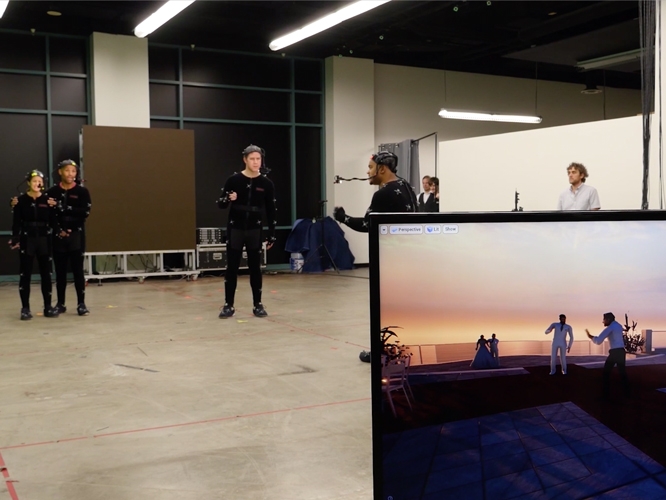
Powerful time-saving virtual cinematography made easy
DragonFly is designed to be a tool that works for you and not the other way around. Supporting multiple platforms and hardware agnostic, DragonFly gives you the freedom to work with a range of display and tracking solutions for whatever setup you’re running without the need for you to be an expert in game engines. ARKit support gives a light-weight wireless mobile virtual camera out of thebox, plus professional tracking system support, including Optitrack and Vive, ensure you can scale with DragonFly as you evolve your virtual production setup.
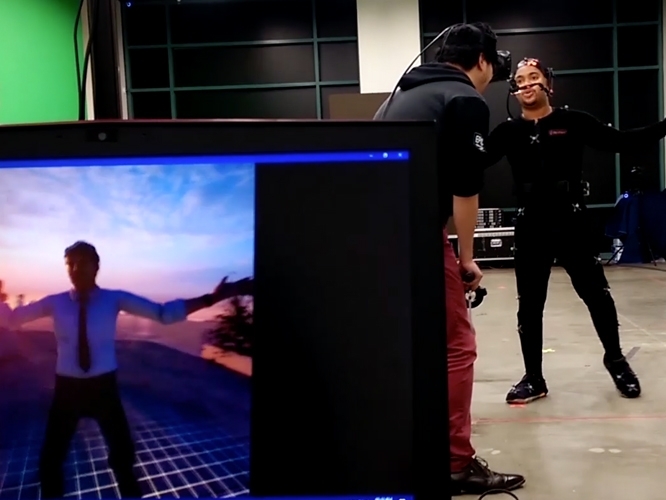
Powerful time-saving virtual cinematography made easy
DragonFly is designed to be a tool that works for you and not the other way around. Supporting multiple platforms and hardware agnostic, DragonFly gives you the freedom to work with a range of display and tracking solutions for whatever setup you’re running without the need for you to be an expert in game engines. ARKit support gives a light-weight wireless mobile virtual camera out of thebox, plus professional tracking system support, including Optitrack and Vive, ensure you can scale with DragonFly as you evolve your virtual production setup.
Production proven virtual production workflow
Built in collaboration with leading Hollywood studios to break down barriers in virtual production. DragonFly gives you an efficient end-to-end virtual cinematography solution from a highly optimized workflow for pre-viz, location scouting, rapid iteration on set, through to reviews and dailies, and if you’re working in a traditional pipeline, straight into post-production.
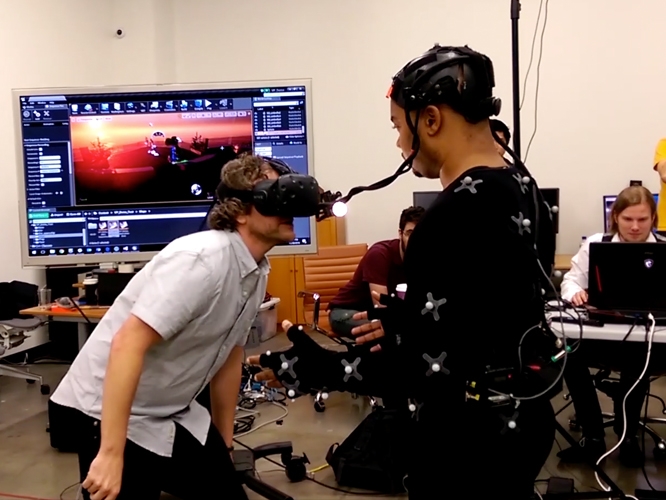
DragonFly for Unreal and Maya In The News
Learn how Ingenuity Studios navigated filming challenges and saved time in post production on Netflix's "Away" by using Unreal Engine and the DragonFly for Unreal virtual camera for pre-visualization.
Watch as Haz Dulull takes you behind the scenes of his latest sci-fi short: Battlesuit. Created entirely in real-time inside the Unreal Engine, see how Haz uses the DragonFly Virtual Camera to bring the war zone sequences in this comic adaptation to life.
Xsens and Glassbox Demonstrate Streaming Motion Capture Data and Virtual Production Techniques through a Virtual Private Network
Supports Unreal & Maya
DragonFly supports both Unreal Engine and leading 3D DCC Autodesk Maya, and offers a like-for-like workflow out-of-the box on both platforms. This means that with our DragonFly virtual camera in your toolkit you’ll never find yourself relearning controls when you move across your favourite production tools.
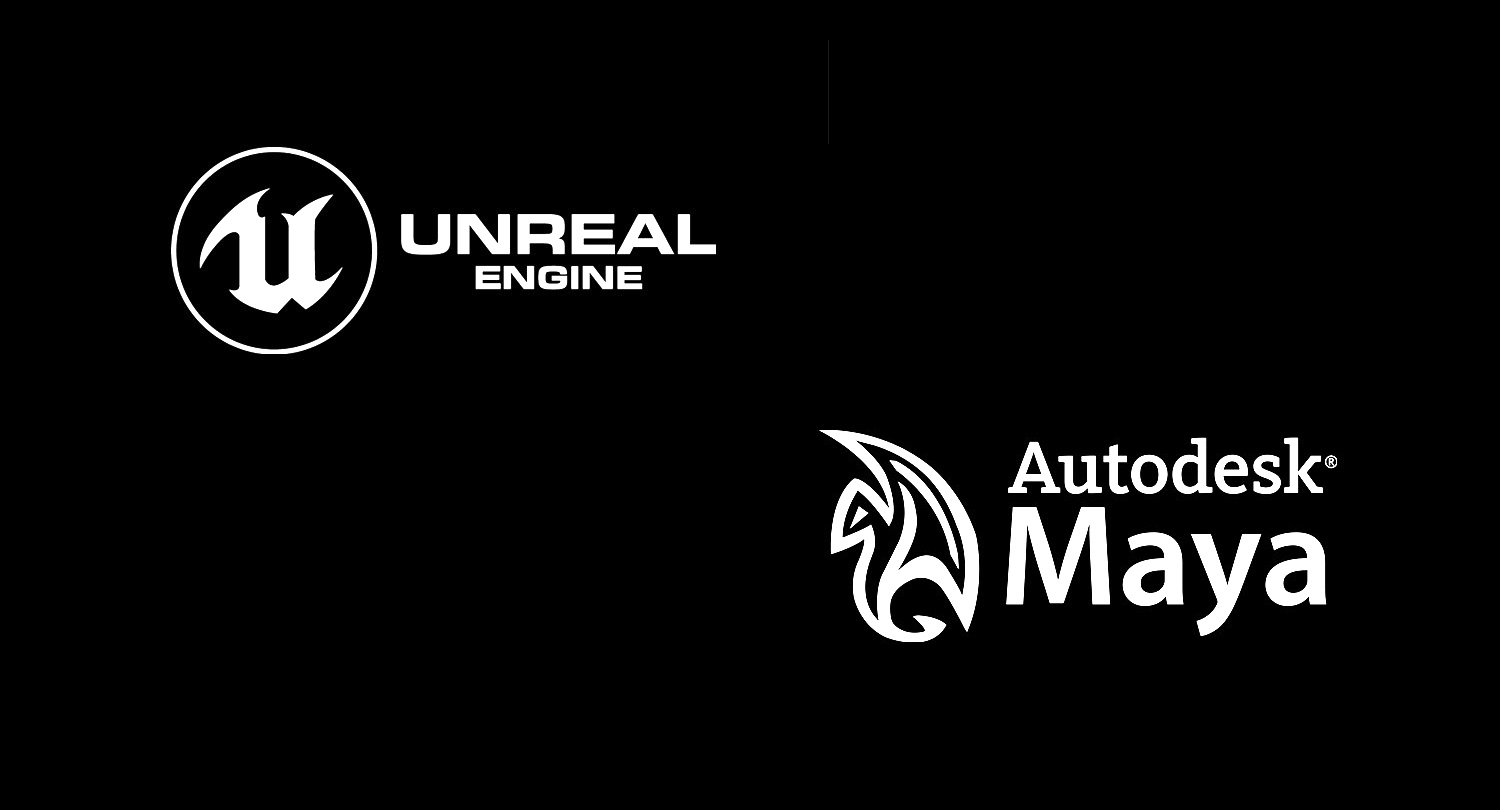
Apple Companion App
DragonFly comes with its own Companion App for Apple devices, giving users fast and simple access to everyday camera hardware for virtual cinematography. This means users can now turn any space into a volume, without the need to invest in a motion capture stage, giving you the mobility and accessibility to test out scenes before committing, iterate faster, block animation, and virtual location scout anywhere.
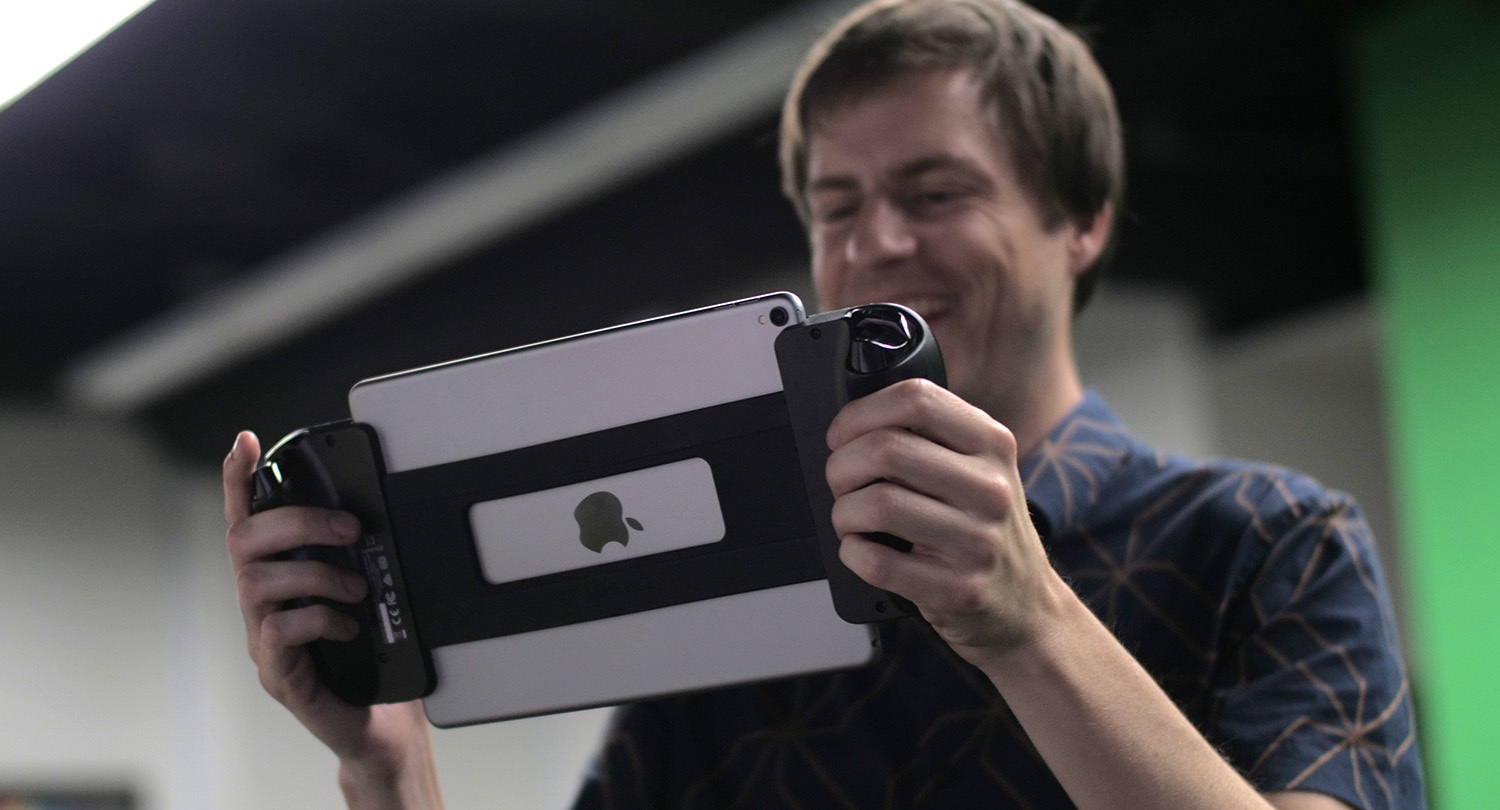
Apple Companion App
DragonFly comes with its own Companion App for Apple devices, giving users fast and simple access to everyday camera hardware for virtual cinematography. This means users can now turn any space into a volume, without the need to invest in a motion capture stage, giving you the mobility and accessibility to test out scenes before committing, iterate faster, block animation, and virtual location scout anywhere.
Joystick Bindings
DragonFly’s handy Joystick Bindings allow users to bind settings for their most commonly used camera features to a joystick, game vice controller or the iPad controls. When using the Bindings users can change reference axis (global or local), giving them the ability to cover large distances or allow for fine tuning. In addition, DragonFly comes with an API Function for Joystick Bindings, giving advanced users the ability to bind custom DragonFly API functions or analog sticks for extensive control over the camera directly through the joystick.
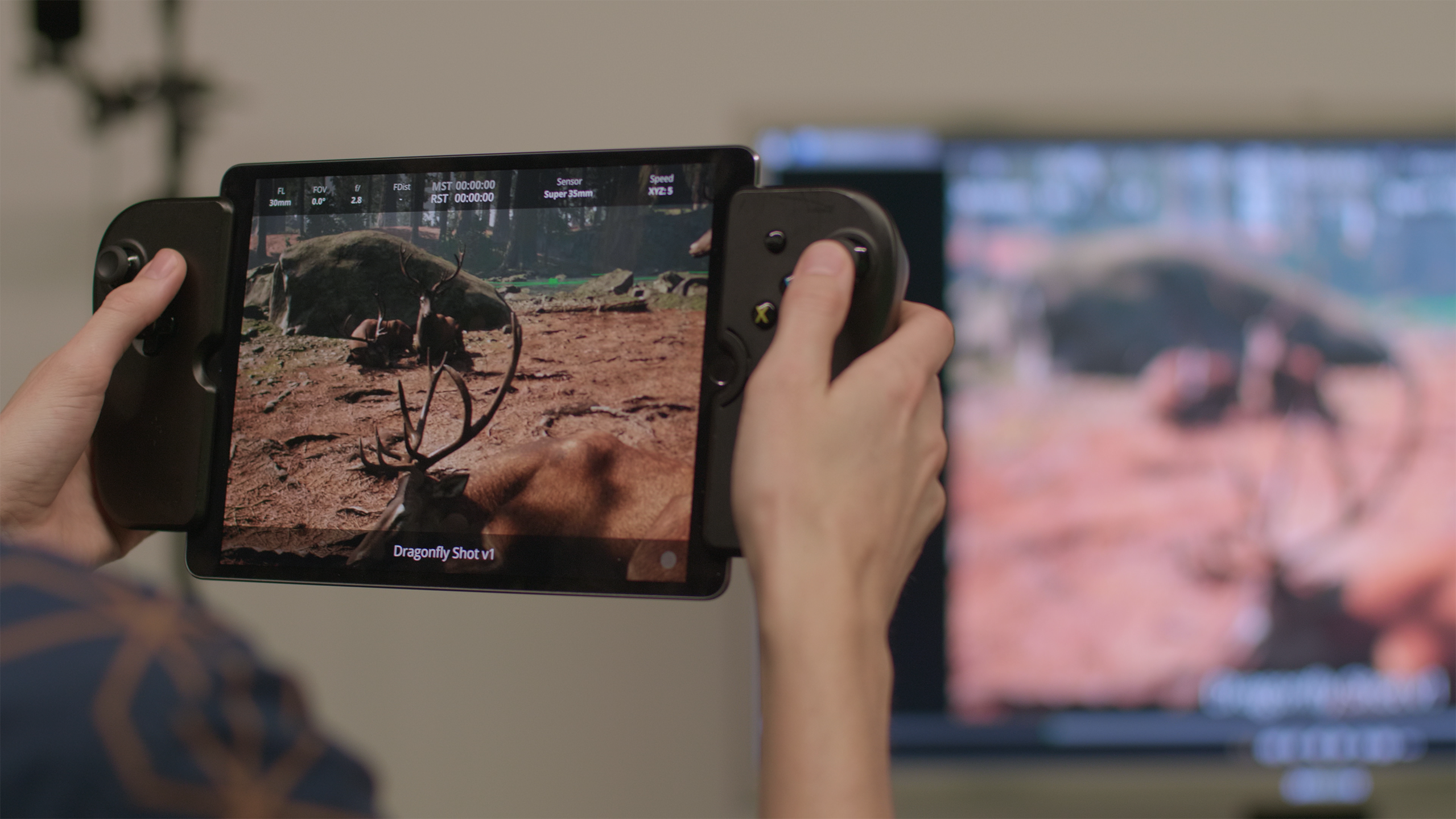
Camera Tracking
DragonFly supports Vive Tracker, ARKit and OptiTrack natively for Camera Tracking. With ARKit both professional and aspiring virtual cinematographers can get to work anywhere without the need for any additional technology or the use of a motion capture stage. For those users already working with the Vive Tracker, MoSys, Vicon or other specialist motion capture systems, DragonFly seamlessly integrates into your existing workflow thanks to its native integrations and Custom Tracking Input API. DragonFly also supports camera track FBX export, meaning users can export recorded sequences as FBX files for use in 3D applications.
Camera Tracking
DragonFly supports Vive Tracker, ARKit and OptiTrack natively for Camera Tracking. With ARKit both professional and aspiring virtual cinematographers can get to work anywhere without the need for any additional technology or the use of a motion capture stage. For those users already working with the Vive Tracker, MoSys, Vicon or other specialist motion capture systems, DragonFly seamlessly integrates into your existing workflow thanks to its native integrations and Custom Tracking Input API. DragonFly also supports camera track FBX export, meaning users can export recorded sequences as FBX files for use in 3D applications.
Platforming
Platforming allows the virtual cinematographer to see from the point of view of a camera from any object in the scene, allowing the user to quickly and easily move around the scene and record from any view point. For example when creating a point-of-view shot for an animated object, Platforming to the object and including its rotation lets the virtual camera move exactly like the object itself. This is particularly helpful to hone in on an area of the scene for more specific takes or can be used to navigate a large virtual scene when virtual location scouting.
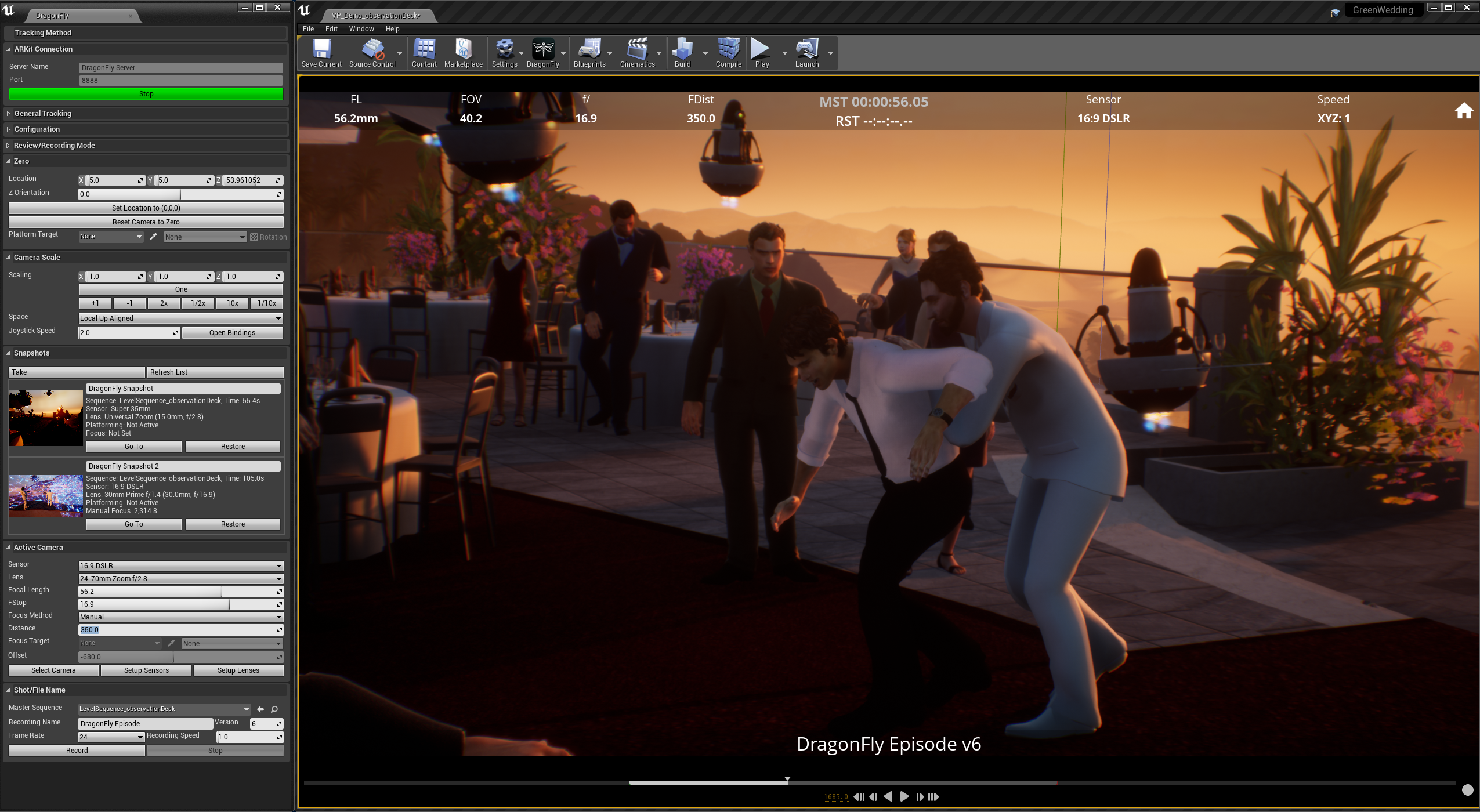
Snapshots
DragonFly’s Snapshot feature allows users to store the position and location of the virtual camera, as well as a specific time on the master sequence so that the user can quickly re-do camera takes without changing settings, or redo takes starting from the same point on the master sequence. This allows users to very quickly and easily generate multiple takes of the same shot, and compare preferred versions.

Snapshots
DragonFly’s Snapshot feature allows users to store the position and location of the virtual camera, as well as a specific time on the master sequence so that the user can quickly re-do camera takes without changing settings, or redo takes starting from the same point on the master sequence. This allows users to very quickly and easily generate multiple takes of the same shot, and compare preferred versions.
Movement Scaling
DragonFly’s tracking system allows the user to specify a per-axis scaling value to convert real world motion into the virtual world. This enables the user to scale up or down movement to fit either a stage or the dimensions of a virtual scene. This motion can also be combined with the joystick controls to support fine or large movements.
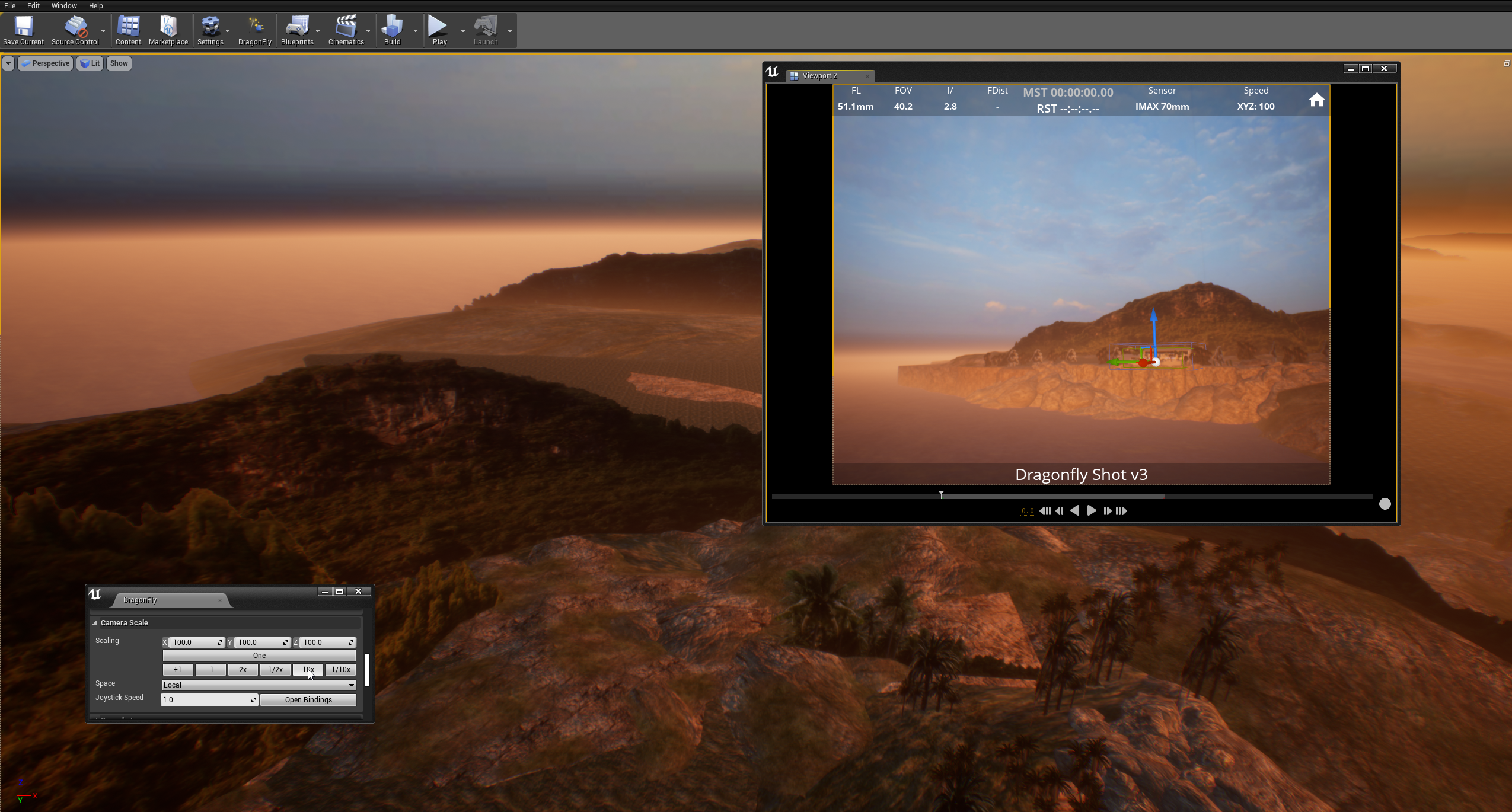
Review & Recording
DragonFly’s Review and Recording systems let users playback pre-recorded sequences directly on the virtual camera or via the mobile companion app, and with advanced recording controls users can efficiently capture difficult sequences. Using the "recording speed" setting, you can slow down your scene animation to capture quick camera motions whilst keeping the sequence FPS unchanged, facilitating the seamless transition between recording and reviewing a shot.
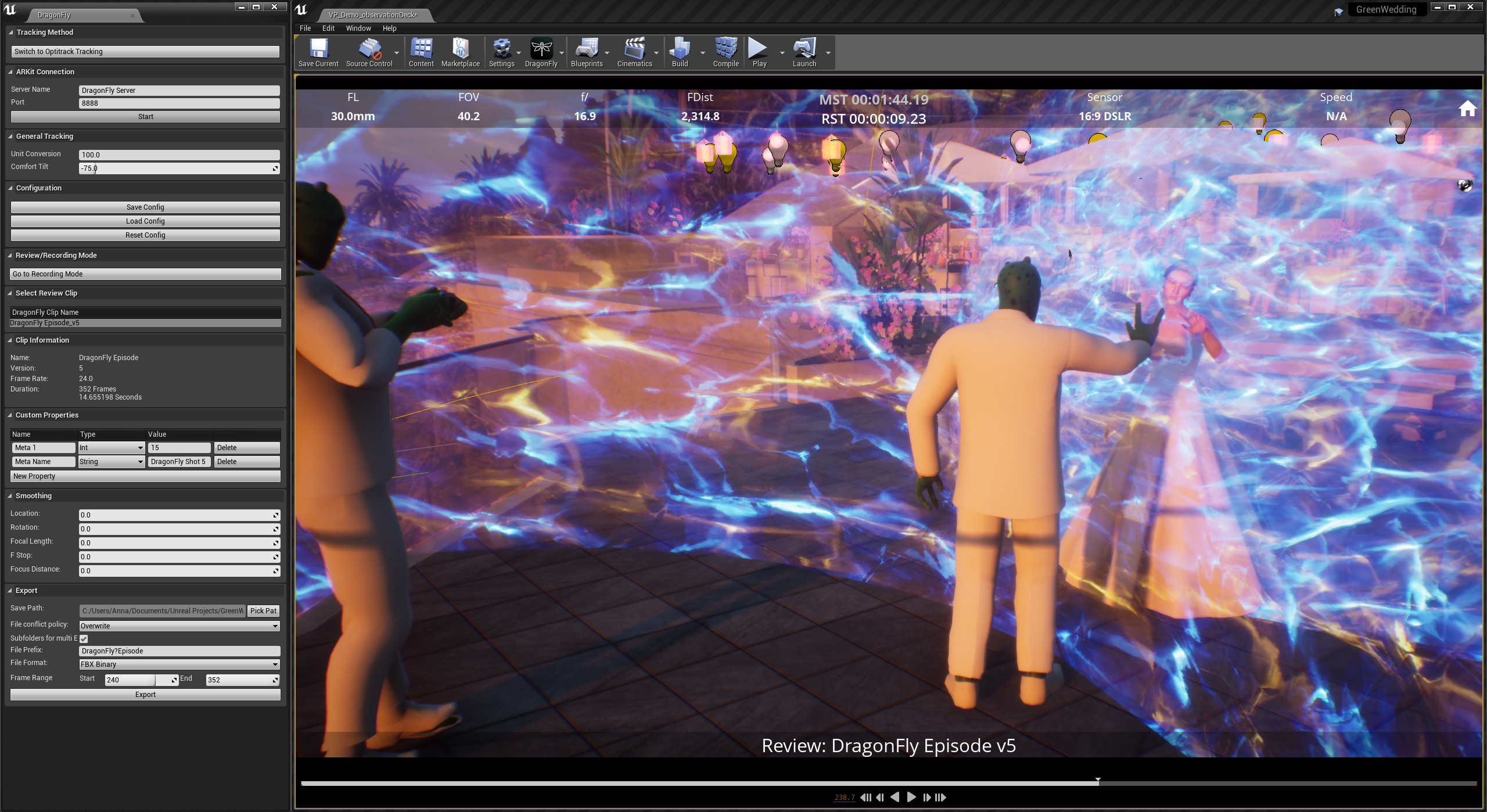
Review & Recording
DragonFly’s Review and Recording systems let users playback pre-recorded sequences directly on the virtual camera or via the mobile companion app, and with advanced recording controls users can efficiently capture difficult sequences. Using the "recording speed" setting, you can slow down your scene animation to capture quick camera motions whilst keeping the sequence FPS unchanged, facilitating the seamless transition between recording and reviewing a shot.
Slow Motion Playback
With Slow Motion Playback users can set a speed factor that enables smooth motion as well as tracking of fast movements, with this feature users have the flexibility to playback either at normal speed or in slow-mo, whereby time appears to be slowed down.

Recorded Clip Smoothing
Recorded Clip Smoothing gives users detailed level controls to smooth camera position, sensor settings and rotation, or smooth the recorded camera motion. This is particularly useful when working with a shot that was recorded in slow motion and as a result has registered jitter in the camera track.
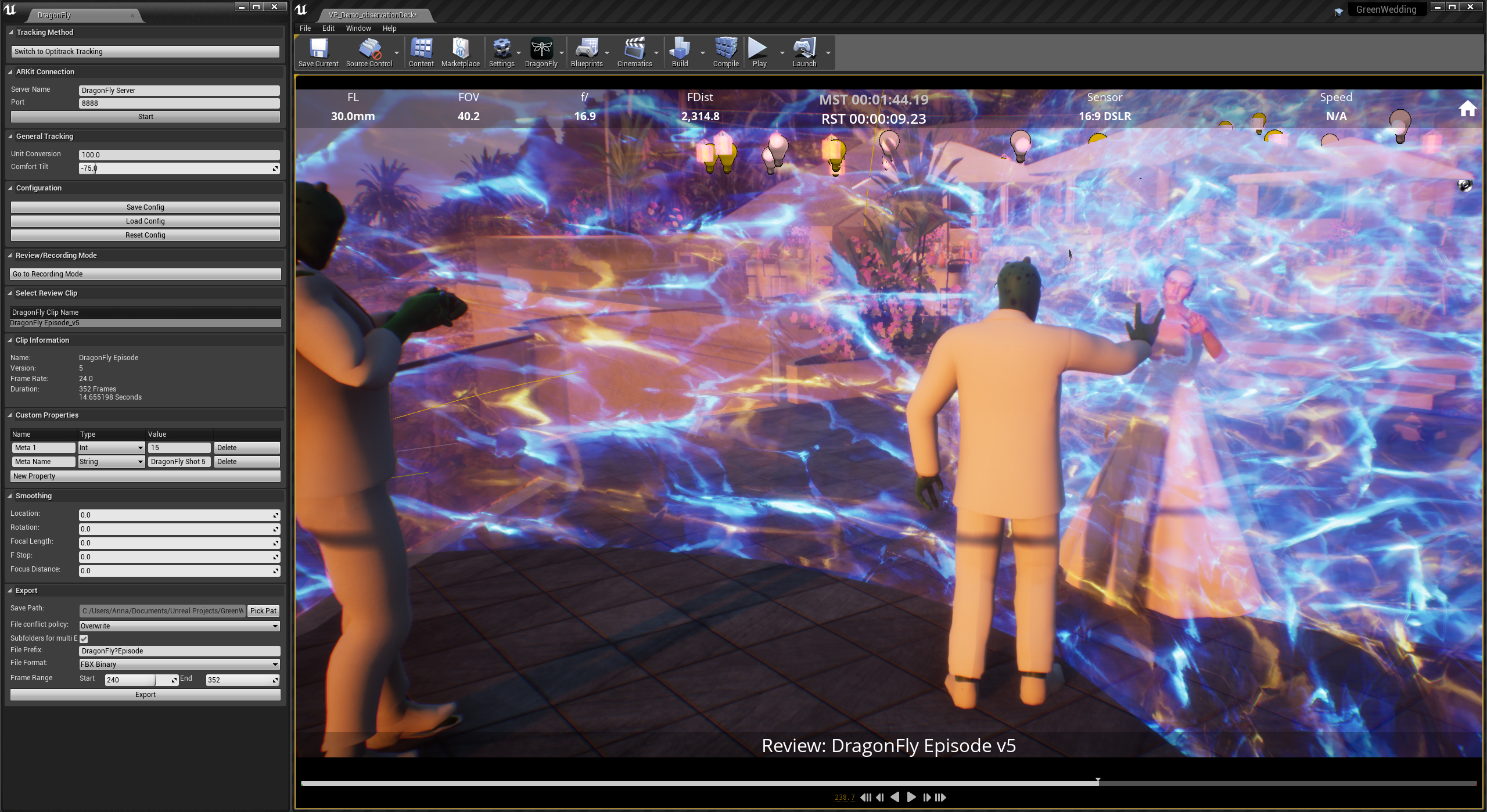
Recorded Clip Smoothing
Recorded Clip Smoothing gives users detailed level controls to smooth camera position, sensor settings and rotation, or smooth the recorded camera motion. This is particularly useful when working with a shot that was recorded in slow motion and as a result has registered jitter in the camera track.
Mixed-Reality Simulcam Mode
Simulcam mode adds mixed reality capabilities with native VIVE Mars CamTrack support. Users can now preview CG and live performances at the same time, through real-time compositing of Unreal Engine scenes with live-action media plates. Automated Composure Setup, 1-Click TimeCode and Genlock Set Up, and Visual Status Troubleshooting Indicators, mean mixing the real and virtual world together has never been easier.
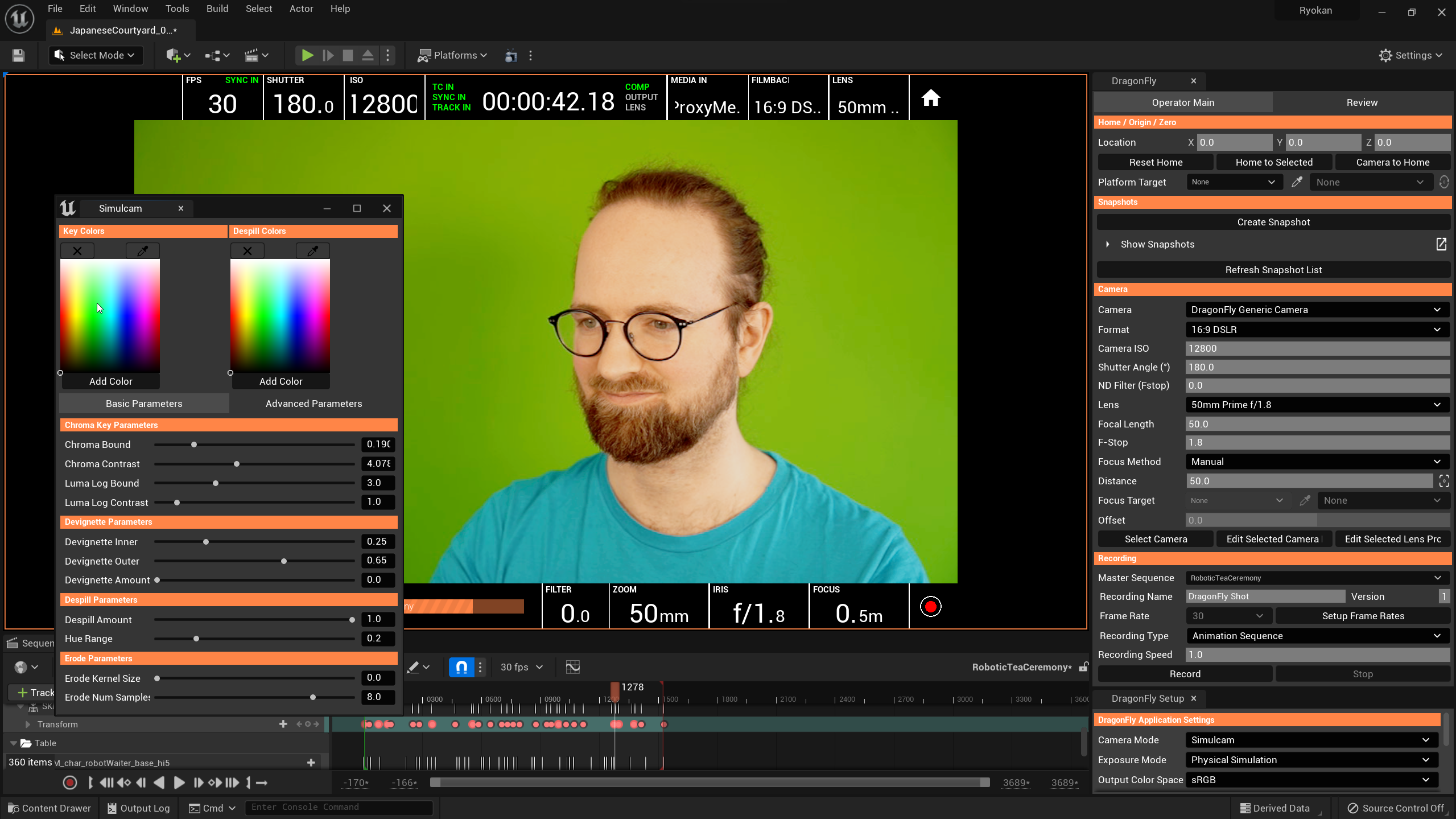
Just one more step…
To access product downloads please login, or create an account and accept our EULA. You’ll then have access to all the good stuff this page contains
Thanks for stopping by.
DragonFly 3.2v6 Out Now
DragonFly 3.2v6 now supports Unreal 5.7 bringing major performance gains to DragonFly's professional virtual cinematography workflow.
Enhanced controls for shot creation are delivered via powerful new Additive Recording and Axis Locking functionality. DragonFly's interoperability features increase again with the addition of Vicon motion tracking support and OSC server support in beta. DragonFly now supports Vicon Shogun Listener
What's new?
ADDITIVE RECORDING
DragonFly 3.2's new Additive Recording functionality combines multiple passes into a single take, giving users the power to modify camera movement or pull focus after the fact. Its flexible Additive Recording interface lets users simply select an existing take along with which components to keep or override, such as movement, rotation and focus, and then record a second pass based on the existing recording.
AXIS LOCKING
Control unwanted camera movement with DragonFly 3.2's new Axis Locking feature. Individual Axis Locking toggles allow users to freeze any combination of movement and rotation, such as camera roll and boom, while maintaining all other movements. Axis Locking can also be set up for control from DragonFly's Companion app through the "Axis Input Settings" blueprint node.
AXIS LOCKING
Control unwanted camera movement with DragonFly 3.2's new Axis Locking feature. Individual Axis Locking toggles allow users to freeze any combination of movement and rotation, such as camera roll and boom, while maintaining all other movements. Axis Locking can also be set up for control from DragonFly's Companion app through the "Axis Input Settings" blueprint node.
VICON TRACKING SYSTEM SUPPORT
Native support for Vicon's motion tracking system takes DragonFly's industry leading range of input integrations to the next level. With DragonFly 3.2, users can connect to a Vicon tracking system directly, bypassing Live Link for a more robust and streamlined workflow.
OSC SERVER SUPPORT (IN BETA)
DragonFly 3.2 introduces beta support for OSC server input, giving users the ability to remote control DragonFly from an Elgato Stream Deck and other external devices! A text-based protocol, OSC can be used to set up flexible interactions; for users working with DragonFly this way, get in touch to share your use cases using helpme@glassboxtech.com.
OSC SERVER SUPPORT (IN BETA)
DragonFly 3.2 introduces beta support for OSC server input, giving users the ability to remote control DragonFly from an Elgato Stream Deck and other external devices! A text-based protocol, OSC can be used to set up flexible interactions; for users working with DragonFly this way, get in touch to share your use cases using helpme@glassboxtech.com.
COMPANION APP ENHANCEMENTS
DragonFly 3.2 further introduces a number of Companion App UX improvements, including multi-device support, an overhauled connection screen that will remember the last used manual IP, and better NDI connectivity for non-standard networking setups. Download the latest DragonFly Companion App for iPad and iPhone directly from your device.
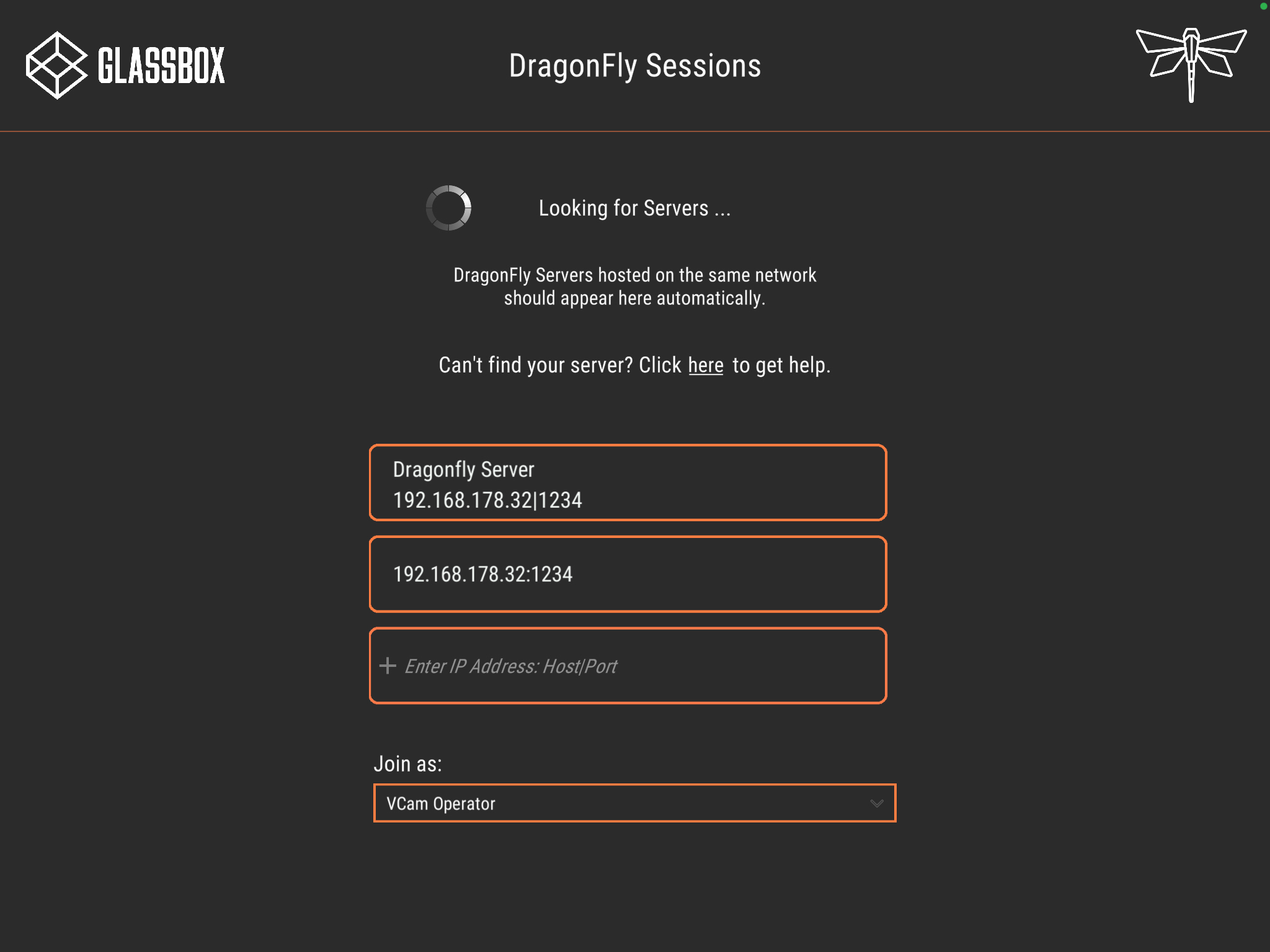
FIXES AND IMPROVEMENTS
DragonFly 3.2v2 introduces a number of bug fixes and improvements, streamlining its workflow for existing users. Platforming and Focus Tracking require fewer clicks, Pre-roll becomes easier to use thanks to an added visual countdown in the Unreal plugin interface, and Number Field formatting is improved, rounding numeric values to more natural decimals.